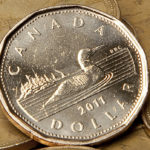The UK pound advanced to the strongest level since August 2011 against the US dollar, as the UK economic recovery increased bets BoE would have to increase interest rates sooner than initially estimated.
GBP/USD hit a 29-month high at 1.6617 at 08:55 GMT, after which the pair traded at 1.6602 by 14:47 GMT, adding 0.17% for the day. Support was likely to be received at January 22nd low, 1.6450, while resistance was to be encountered at August 19th 2011 high, 1.6618.
The pound continued to be supported after yesterdays data revealed the nations unemployment fell more-than-projected, reaching 7.1% in the three months to November, just above the 7% threshold that BoEs Governor Mark Carney pledged to use as a benchmark for raising interest rates. Analysts had expected the unemployment will decline to 7.3% in the three months to November from a previous reading of 7.4%. According to the UK Office for National Statistics (ONS), this was the largest decline in unemployment since 1997 and the lowest level since May 2009.
A separate report by the ONS revealed the number of people filing for jobless benefits in the UK fell by 24 000 people, less than analysts’ expectations for a decline of 32 000.
According to BoE’s minutes from its January meeting released yesterday, the unemployment may hit the central bank’s 7% threshold “materially earlier” than estimated. However, the minutes also revealed that policy makers didn’t feel pressured to take immediate actions to raise interest rates, if the threshold is reached too soon. BoE’s policy makers also voted unanimously to keep the central bank’s policy steady in January.
“The market at the moment is going to maintain a fairly sterling-positive environment overall,” said Ian Stannard, head of European foreign-exchange strategy at Morgan Stanley in London, cited by Bloomberg. He also added that:“If we start to see the Bank of England more formally pushing back against rate-hike expectations next month, then that would put sterling back under pressure.”
Meanwhile, greenback’s demand continued to be supported by a recent batch of overall upbeat reports, which increased bets for further cuts in Fed stimulus.
The US Bureau of Labor Statistics reported today that the number of initial jobless claims in the US increased by 1 000 to 326 000 in the week ended January 18th from downward revised 325 000 in the previous week. Analysts had estimated that the people who file for unemployment benefits will increase to 330 000.
Greenbacks demand was pressured after a report by the market research group, Markit Economics, revealed an unexpected decline in the preliminary manufacturing PMI to 53.7 in January from 54.4 in the preceding month. Analysts had projected that the index will increase to 55.0.
Data showed on Friday that US home construction slowed less than analysts had projected, while industrial output expanded for a fifth consecutive month. Only the consumer sentiment came at a lower-than-expected reading in January, but this was not enough to change the overall market consensus that Fed will continue tapering throughout 2014.
Overall, the reports provided support to greenback’s demand, as they favored the view that the Federal Reserve Bank may continue tapering during the year. Central bank’s policy makers said on December 18th that they will reduce monthly asset purchases to $75 billion from $85 billion, underscoring improving labor market conditions.
The bank will probably continue to pare stimulus by $10 billion at each policy meeting before exiting the program in December, according to a Bloomberg News survey of 41 economists, conducted on January 10th. The Federal Open Market Committee is scheduled to meet next on January 28-29.
Elsewhere, EUR/USD advanced 0.75% to trade at 1.3646 at 09:55 GMT, the biggest daily increase since October 22nd, after which consolidation followed at 1.3635. Support was likely to be received at January 21st low, 1.3516, while resistance was to be met at January 16th high, 1.3650.





